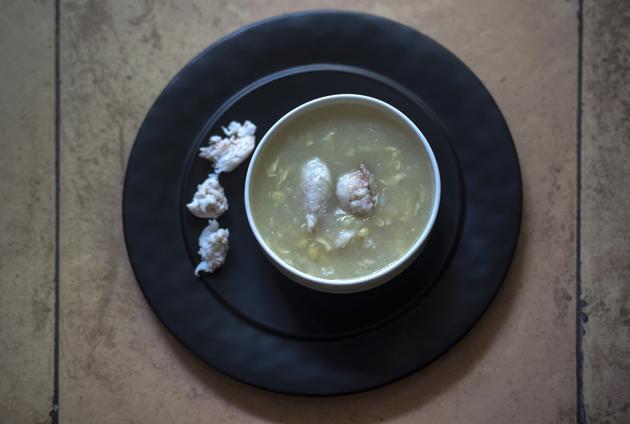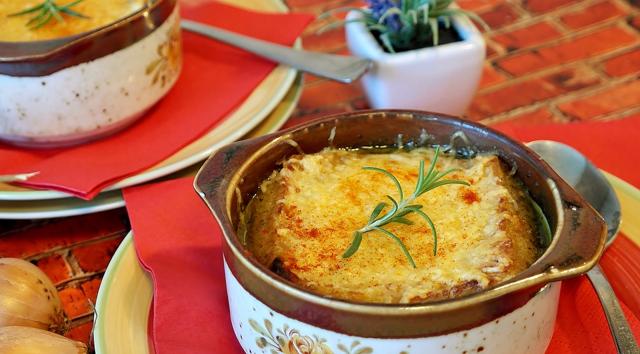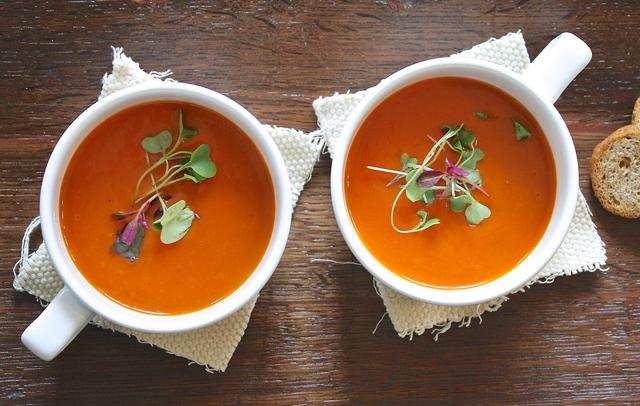How I was bowled over: Kunal Vijayakar on his love affair with soups
‘Whether a thick Ham Hock and Green Pea or a spicy Tom Yum Goong, soups soothe the stomach and warm the heart.’
My sister just hated soup, and soup was what happened before every meal at Mahableshwar. It was a junket that recurred every year without fail. The family would load up in our various Hillmans, Studebakers and Humbers and in a caravan of cars snaking up the Sahyadri Ghats, uncles, aunts, grandparents, cousins and domestic help would head for a summer holiday at Fredrick Hotel in this woodsy, idyllic hill-station.

In the ’60s and ’70s, Fredrick Hotel still inhabited the ’30s and ’40s, like a period drama, especially when it came to meals. Tea would arrive in the rooms early in the morning, and you could place your order for breakfast with the bearer. All meals were in the dining hall adjoining the parlour, which overlooked the valley. Breakfast was never just eggs. Piles of toast would welcome you at the table, with butter and jam made from fresh Mahableshwar strawberries.
Then there would be a carte du jour of either liver on toast, kheema on toast, kidney on toast, sardines or puri-bhaji. This would be the beginning of many days of many courses, of many meals, all served in the fashion of a bygone era.
We kids always headed to dinner around 7 pm while the grown-ups settled down on the verandah with their cardigans and cocktails. All meals started with soup, and while my younger sister stared at her plate with repugnance and squeamishness, I grew to love the snugness of a warm, thick broth on a cold evening. I suppose that’s where my love for soup began.

If you think about it, there is no meal as simple and yet as complex as a soup. Cooking soup could well be as primitive as the history of cooking. Even before the advent of the recipe, or cuisine, gathering a few ingredients and boiling them up in a pot was simple, nutritious and filling.
The modern soup finds its origins in the gruel or broth, which is cereal, wheat or rice boiled in water or milk. Then, before the Brits could say porridge, the French with their flair and savvy gurgled up saucepans full of Bouillions, Consommés, Veloutés, Bisques and Bouillabaisses. In Asia too, soup plays a heroic role in cuisine. From Myanmar all the way to China, Thailand, Vietnam and faraway Japan, soups form a staple at any meal. But unlike European soups, Asian soups don’t use cream and milk, but depend on corn or potato starches to swell them thick, and umami or xian to add fragrance.
There is nothing I like more than a well-made Sweet Corn Crab Meat Soup. Of course, every Chinese restaurant serves Sweet Corn Crab Meat Soup, including the roadside Chinese cart. Most replace crab with chicken, but the Sweet Corn Soup is ubiquitous, and I tend to judge the quality of the soup based on how generously, fresh crabmeat is served in the soup. And so to me it is not any Chinese restaurant, but the Mangalorean seafood restaurants in Mumbai that make the best Sweet Corn Crab Meat Soup. It’s because their seafood is the freshest and is bought in abundance. Nothing beats a hot bowl of egg drop in stock, thickened with cornflower or arrowroot, with a fistful of fresh crab claw meat.
We grew up eating the most basic of soups at home or at the Club — Tomato Soup, Cream of Spinach, Cream of Chicken or Mulligatawny. But all soup comes with its own etiquette. Soups can be served in bowls or in plates and should always be served out of a tureen. Clear soups or Consommés are often served in a deep soup plate. As you eat the soup and the level drops, you are supposed to lift the edge closest to you with your left hand, tip the bowl away from you, and spoon the soup away from you. If your soup has been served in a two-handled bowl, then you can pick up the bowl and sip the soup.

Like a classic French Onion Soup, where bread and cheese play leading roles, croutons add a third dimension to soups. Be it a Scotch Broth or a Mushroom Soup, a few crusty cubes make a toasty difference.
Europe is the home of the most famous soups in the world. Starting with the luxurious Lobster Bisque, where lobsters are sautéed in butter, in their shells, then simmered in wine, garlic, celery, bay leaf and thyme, before being strained, and followed by the addition of double cream.
Or the Scottish Cock-a-Leekie Soup, which as the name suggests is a rustic poultry and leek soup made in an oven, with shredded chicken, coarsely cut leek onions and barley, flavoured with celery, garlic, white wine, carrots, and juliennes of prunes.
Then of course there’s the Minestrone, one of the cornerstones of Italian cuisine. A thick soup commonly made with whatever ingredients are handy — fresh seasonal vegetables, beans, onions, celery, carrots, and tomatoes in a meat stock. Often with the addition of pasta or rice.
The Americans too invented a soup, but gave it a French name. Crème Vichyssoise Glacée is an opulent, cold, creamy leek and potato soup, avowedly created at the Ritz Hotel in New York, in 1917.
In Portugal, the Sopa Alentejana stands apart from the rest. From Portugal’s cuisine-rich Alentejo region, it is last night’s bread quenched in a paste of garlic and coriander and topped with a poached egg, then flooded with chicken stock, olive oil and a dash of red wine. The other Portuguese soup that is now a native of Goa as well is the Caldo Verde. Verde means green and in the Goan version, kale is replaced with spinach. By nature it is a vegetarian soup, although meat-loving Goans often add some chorizo (Goa sausage) to the mix.
I look forward to meals that start with soup. A creamy Almond Soup, a thick Ham Hock (pork knuckle) and Green Pea Soup so popular in old British restaurants, a spicy Tom Yum Goong or a peppery Rasam. Soup soothes my stomach, warms my heart and, and as famously said, “is for the soul”.



